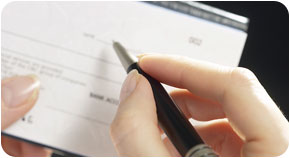
Module 12: Refund, Amount Due, and Recordkeeping

Taxpayers receive refunds when their total tax payments are greater than the total tax. Taxpayers receive refunds from the government as checks or as direct deposits to the taxpayers' bank accounts. Taxpayers must pay an amount due to the government when the total tax is greater than their total tax payments. Payments can be made by check, money order, credit card, or direct debit (for electronic filers only). Taxpayers need to keep good records to support all items on the tax return.
|
materials:Tax Tutorial: Refund, Amount Due, and RecordkeepingCheck your understanding of how to handle refunds and payments as well as recordkeeping requirements. Fact Sheet: Refund, Amount Due, and RecordkeepingDiscover the different ways that refunds and payments can be handled. Learn about recordkeeping requirements. Simulation 12: Completing a Tax Return Using Form 1040 to Claim a DependentHelp Jacob Hastings, a married man with one child, complete his tax return. Assessment: Refund, Amount Due, and RecordkeepingReview your understanding of refunds, amounts due, and recordkeeping. |
| skill check: |
|
Check your understanding of refunds, amount due, and recordkeeping. Indicate whether each of the statements below is true or false by clicking on the correct answer. To assess your answers, click the Check My Answers button at the bottom of the page.
|
